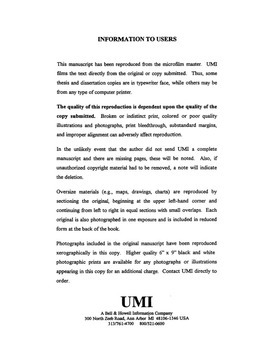| dc.contributor.advisor | Gollahalli, S. R., | en_US |
| dc.contributor.author | Qubbaj, Ala Rafat. | en_US |
| dc.date.accessioned | 2013-08-16T12:30:26Z | |
| dc.date.available | 2013-08-16T12:30:26Z | |
| dc.date.issued | 1999 | en_US |
| dc.identifier.uri | https://hdl.handle.net/11244/5766 | |
| dc.description.abstract | The thermal and composition fields of the baseline and venturi-cascaded flames were numerically simulated using CFD-ACE+, an advanced computational environment software package. The CO and NO concentrations were determined through CFD-POST, a post processing utility program for CFD-ACE+. The final simulated results were compared with the experimental data. Good agreement was found in the near-burner region. (Abstract shortened by UMI.) | en_US |
| dc.description.abstract | The venturi-cascading technique at its optimal conditions resulted in a decrease of 87% and 33% in CO and NO emission indices along with a 24% decrease in soot emission from a propane jet flame, compared to the baseline condition (same flame without venturis). The reduction of NO without increasing CO was the main attraction of this technique. | en_US |
| dc.description.abstract | Propane jet diffusion flames at three burner-exit Reynolds numbers ( 3600, 5100 and 6500) corresponding to burner-rim-attached, undergoing transition from attached to lifted, and fully-lifted configurations were examined with several sets of venturis of different sizes and spacing arrangements. Temperature, and the concentrations of carbon dioxide, oxygen, carbon monoxide and nitric oxide in the exhaust products were measured before and after the modification, and optimal conditions to minimize pollutant emissions were obtained. The optimal value of venturi throat/burner-exit diameter ratio (D/d) was 32 +/- 3, which corresponded to an approximate clearance of 5 +/- 2 mm between the venturi throat and the burning jet width at the mid-flame height. | en_US |
| dc.description.abstract | Laser Induced Fluorescence (LIF) measurements, in the near-burner region of the venturi-cascaded flame, indicated an average decrease of 18%, 24% and 12% in OH, CH and CN radical species, respectively, along with 11% drop in soot precursors (PAR), from their baseline values. | en_US |
| dc.description.abstract | The temperature and composition measurements, at the optimal conditions, showed that, in the near-burner region, the venturi-cascaded flame had lower temperature and CO2 concentration by an average of 5% and 7%, respectively, than the baseline flame. However, in the mid-flame and far-burner regions, it has higher temperature by 13% and 12%, and higher CO2 concentration by 16% and 13%, in average values, respectively. | en_US |
| dc.description.abstract | A new technique to control carbon monoxide, nitric oxide, and soot emissions of a propane diffusion flame by modifying the air infusion rate into the flame was developed. In this study, the effectiveness of the "venturi-cascading" technique was experimentally as well numerically investigated. | en_US |
| dc.format.extent | xxvii, 245 leaves : | en_US |
| dc.subject | Engineering, Mechanical. | en_US |
| dc.subject | Venturi tubes. | en_US |
| dc.subject | Physics, Fluid and Plasma. | en_US |
| dc.subject | Jets Fluid dynamics. | en_US |
| dc.subject | Flame. | en_US |
| dc.title | An experimental and numerical study of gas jet diffusion flames enveloped by a cascade of venturis. | en_US |
| dc.type | Thesis | en_US |
| dc.thesis.degree | Ph.D. | en_US |
| dc.thesis.degreeDiscipline | School of Aerospace and Mechanical Engineering | en_US |
| dc.note | Adviser: S. R. Gollahalli. | en_US |
| dc.note | Source: Dissertation Abstracts International, Volume: 59-12, Section: B, page: 6468. | en_US |
| ou.identifier | (UMI)AAI9914419 | en_US |
| ou.group | College of Engineering::School of Aerospace and Mechanical Engineering | |
